Aalto2 Museum Centre opens, fulfilling Alvar Aalto’s vision in Jyväskylä
The Aalto2 Museum Centre opens, connecting the Alvar Aalto Museum and the Museum of Central Finland in Jyväskylä, the legendary Finnish architect’s home town

The Aalto2 Museum Centre is the latest addition to Jyväskylä's rich cultural offering. It was there that legendary Finnish modernist architecture master Alvar Aalto (1898–1976) created the Museum of Central Finland (completed in 1961, and later thrice renovated) and the Alvar Aalto Museum (1971-73), standing next to each other, representing his 'white' era. Now, Aalto2 is set to further articulate the architect's powerful creative vision, connecting the two adjacent structures.
Jyväskylä, 270km north of Helsinki, is Aalto’s home town, and a must-see destination for architecture, design and culture enthusiasts, as it is also home to the largest number of Aalto-designed buildings in the world. There are 29 in total, including the Säynätsalo Town Hall (1949-52), the University of Jyväskylä (1951-71), Muurame Church (1926-29), Jyvaskyla Worker’s Club (1924-25), and Muuratsalo Experimental House (1952-54). Meanwhile, his otherworldly Finnish Pavilion at the 1939 World’s Fair was hailed as the 'work of genius' by Frank Lloyd Wright.

Aalto2 Museum Centre: a vision fulfilled
Aalto2 fulfills Aalto's wish of creating a forum to showcase a variety of art forms. In fact, in his first proposal for the Jyväskylä Art Museum (later the Alvar Aalto Museum), he envisioned a connecting corridor between the two neighbouring institutions, as evidenced in a 1971 drawing.
The extension design that opened to the public this week was created by Helsinki-based A-Konsultit Architects (also behind the renovation of both museums). It has turned the gap with a geometric pool and landscaped garden between the museums into a courtyard. Courtyards became Aalto’s signature element after he saw people socialising in piazzas in small Italian villages. Behind the extension is another newly created small outdoor gathering space with rectangular stone benches for various activities, such as school children’s meetings.

The interior is a clean, white open space with straight lines seamlessly fusing the two museums on both ends. Its functionalities are multilayered and enhance the visitor experience. It improves accessibility to both museums, and houses the gift shop, the café-restaurant, and the space for events with a wide staircase doubling as an amphitheatre-like seating (another Aalto signature feature inspired by the ancient Greek theatre of Pergamon).

Visitors to Aalto2 are treated to three new exhibitions. The opening show of Aalto2, 'World Heritage – Human Traces', jointly produced by the two museums, is a grand tour of tangible and intangible heritage, accompanied by photos and detailed descriptions. It consists of five sub-exhibitions: World Heritage, Celebrities, Finnish Sauna Culture, Finland and the World, and The Moderns, each diving into its theme. It was curated and designed by the Finnish-Spanish architectural duo Anna and Eugeni Bach.

The permanent exhibition of the Museum of Central Finland, a regional cultural history museum, 'Exploring Central Finland', takes visitors on a journey across the rich, unique spirit of Central Finland from prehistoric times to this day, with objects to see, memories to listen to, a film to watch, and more. One of the highlights is a working jukebox from the 1960s.
Wallpaper* Newsletter
Receive our daily digest of inspiration, escapism and design stories from around the world direct to your inbox.
The new permanent exhibition at the Alvar Aalto Museum, 'AALTO – Work and Life', presents the architect's body of work through his philosophy, drawings, materials, processes, models and end-results.

The show also highlights works by his wives and collaborators, Aino Aalto (1894–1949) and Elissa Aalto (1922–94); as well as vital collaborators such as Otto Korhonen, a carpenter and factory owner from 1920s, for furniture; Viljo Hirvonen, a metalsmith master electrician from 1950s, for lighting fixtures; and ceramics companies like Kupittaa Clay and Arabia Ceramic Factory for tiles. Mari Murtoniemi, chief curator of the Alvar Aalto Museum, said: 'Aalto was a designer, and absolutely needed the talents and skills of those material experts to realise his designs.'
The exhibition also showcases, for the first time in the museum’s history, illustrations and book cover designs from the architect's 1920s. These supplemented his income while he was building up his architecture commissions.

Aalto believed that architecture and good design can solve problems in human life and society, as it is the architect’s duty to serve the everyday, and us all. This democratic design principle helped Finland lift its peoples’ spirits and face the daily realities of life after a series of wars since the country's independence in 1917. This principle is amplified in Aalto2 as it welcomes everyone of any age and background to immerse themselves in its well-curated, multifaceted programme of exhibitions and events.
Aalto2 is part of the 125th anniversary celebrations commemorating Alvar Aalto’s birth.
Naomi Moriyama is a contributing writer for Wallpaper*. She is co-author of ‘The Sisterhood of the Enchanted Forest: Sustenance, Wisdom & Awakening in Finland's Karelia,’ which explains, through personal journeys, how connections to nature and democratic design principles have helped make Finland the world’s happiest nation. She also co-authored three books on the health benefits of traditional Japanese foods. Naomi is a Tokyo-born New Yorker who spends much time in Helsinki.
-
 The new Ford Capri wants to tap a vein of Gen X nostalgia. Does it succeed?
The new Ford Capri wants to tap a vein of Gen X nostalgia. Does it succeed?We ask if the all-electric Ford Capri can capture the swagger of its much-loved but rather oafish predecessor
By Guy Bird Published
-
 Rug designer Sibylle de Tavernost’s homage to Fernard Léger
Rug designer Sibylle de Tavernost’s homage to Fernard LégerAbstract modern art, craft heritage and contemporary life fuse in Sibylle de Tavernost's new limited-edition rugs
By Harriet Thorpe Published
-
 Private gallery Stiftung Froehlich in Stuttgart stands out with an organic, cloud-shaped top
Private gallery Stiftung Froehlich in Stuttgart stands out with an organic, cloud-shaped topBlue-sky thinking elevates Stiftung Froehlich, a purpose-built gallery for the Froehlich Foundation’s art collection near Stuttgart by Gabriele Glöckler
By Hili Perlson Published
-
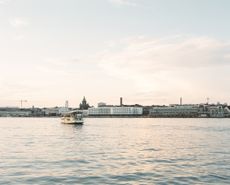 Exclusive first look: Katajanokan Laituri sets a new standard for timber architecture
Exclusive first look: Katajanokan Laituri sets a new standard for timber architectureKatajanokan Laituri, a new building in the historic Kauppatori market district of Helsinki, is made from around 7,500 cubic metres of wood, cementing Finland’s position as leader in sustainable architecture, construction and urban development
By Hugo Macdonald Published
-
 Wallpaper* Architects’ Directory 2024: meet the practices
Wallpaper* Architects’ Directory 2024: meet the practicesIn the Wallpaper* Architects Directory 2024, our latest guide to exciting, emerging practices from around the world, 20 young studios show off their projects and passion
By Ellie Stathaki Published
-
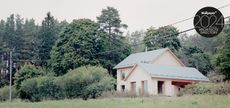 Nordic minimalism meets warm personality at Studio Collaboratorio’s new home in Finland
Nordic minimalism meets warm personality at Studio Collaboratorio’s new home in FinlandThe emerging Finnish practice Studio Collaboratorio is welcomed into the Wallpaper* Architects’ Directory 2024
By Ellie Stathaki Published
-
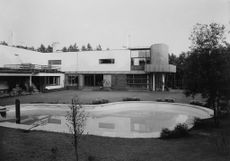 Skateboarding in swimming pools: the case of Alvar Aalto’s Villa Mairea
Skateboarding in swimming pools: the case of Alvar Aalto’s Villa MaireaA family of shows at Aalto2 Museum Centre explores skateboarding in swimming pools through the case study of Alvar Aalto’s Villa Mairea in Finland
By Francesca Perry Published
-
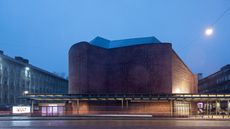 Alvar Aalto's House of Culture in Helsinki is a modernist gem reborn
Alvar Aalto's House of Culture in Helsinki is a modernist gem rebornModernist icon House of Culture by Alvar Aalto has been restored and brought to the 21st century by Finnish architecture studio JKMM and Design Agency Fyra for ASM Global Finland
By Ellie Stathaki Published
-
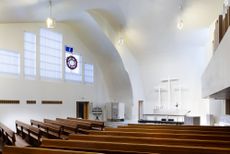 Help save the Church of The Three Crosses by Alvar Aalto in Imatra, Finland
Help save the Church of The Three Crosses by Alvar Aalto in Imatra, FinlandThe Church of The Three Crosses in Imatra, one of master modernist Alvar Aalto's works, is in danger; Tiina Laakkonen has set up a fundraiser to help save it
By Pei-Ru Keh Published
-
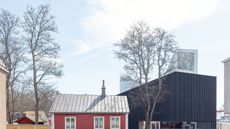 Welcome to Chappe: Finland's 'pocket sized' house of art
Welcome to Chappe: Finland's 'pocket sized' house of artChappe, a new art house in southern Finland designed by JKMM, punches above its weight
By Ellie Stathaki Published
-
 Nordic architecture explored in Share, a book about contemporary building
Nordic architecture explored in Share, a book about contemporary buildingDiscussions about Nordic architecture and contemporary practice meet in a new book by Artifice, Share: Conversations about Contemporary Architecture – The Nordic Countries
By Ellie Stathaki Published